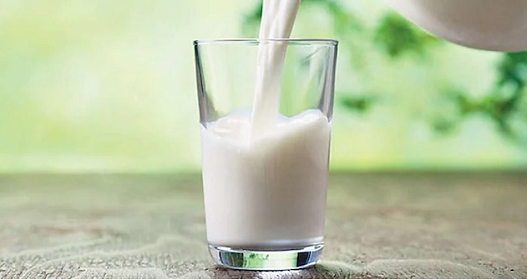
The Food and Agriculture Organization of the United Nations (FAO) has announced a new collaboration with the Dairy Development Authority (DDA) to boost exports of Ugandan milk and dairy products and assess potential new markets, as part of the country’s ongoing efforts to strengthen the dairy sector.
Under Uganda’s new Dairy Policy Action Plan – a multi-year framework to consolidate and grow the dairy sector – one of the objectives set by DDA is to increase demand for Ugandan milk both at home and abroad. In that regard, the new export competitiveness study announced June 1, 2023 will analyse trade flows in the dairy sector over recent years, identify dairy products and dairy by-products with export potential, and assess Uganda’s comparative advantage relative to its competitors.
This comprehensive assessment, led by the FAO Monitoring and Analysing Food and Agricultural Policies (MAFAP) programme, FAO AgrInvest, and the International Growth Centre (IGC) in Uganda and in collaboration with DDA, will also identify the most dynamic export markets and recommended policy interventions and investments to position Uganda as a competitive milk and dairy supplier.
“On World Milk Day we are pleased to announce our latest FAO support to Uganda, this time on milk exports. Knowing how competitive Ugandan milk is for international markets is the first step to boosting dairy exports, which is needed more so than ever. With that and the measures and investments in the Dairy Policy Action Plan, the dairy sector is set up for transformation for better production and better nutrition, leaving no one behind”, said Marco V. Sánchez, Deputy Director of Agrifood Economics at FAO.
DDA’s Dairy Policy Action Plan, which came into effect last year, outlines a number of measures to be taken to boost consumption, incentivize production, improve quality and tap into export potential. These include enhancing infrastructure, curbing waste and loss along the supply chain, enhancing operations at milk collection centres and processing facilities across the country, improving the overall quality and shelf-life of milk and meeting food-safety standards for exports. A growing demand for milk can also help incentivize investment throughout the dairy value chain – from production, to upstream and downstream operations –, which would also bring higher productivity gains, year-round supplies, and better quality.
”Milk plays a very important role in Uganda, not just economically for the millions of households, but also provides a core foundation for proper childhood growth and health. As DDA we are putting a major emphasis on increasing milk consumption domestically through the School Milk Program, and also expanding our export market portfolio for increased foreign exchange that translates to more earnings for our farmers. The dairy export competitiveness study is timely to re-enforce our quest for additional export markets for our milk. We are grateful for the efforts and collaboration with FAO in ensuring the growth of our dairy sector,’ said Samson Akankiza, the Acting Executive Director at Dairy Development Authority.
These efforts to further strengthen the dairy sector come at a time when raw milk production has surged from 1.9 billion litres in 2014 to 3.2 billion litres in 2022. Whereas exports, although on the increase in recent years, remain overly dependent on demand from key East Africa export markets, including neighbouring Kenya.
Moreover, the DDA estimates that domestic household consumption of milk stands at just over a half litre (550 millilitres) a day. This is 68% less than the dietary intake recommended by FAO and WHO, meaning Ugandans consume their recommended milk intake for about 2 out of the 7 days in a week.
FAO Representative in Uganda Antonio Querido said, “We are proud to announce our collaboration with the Dairy Development Authority (DDA) to boost exports of Ugandan milk and dairy products, which will contribute to the ongoing efforts to strengthen Uganda’s dairy sector.”
“As we celebrate World Milk Day, FAO is committed to supporting Uganda in its efforts to improve the livelihoods of dairy farmers and traders, and boost exports of high-quality Ugandan milk and dairy products”, Querido added.
To help achieve this target and transformation, Querido pledged FAO’s continued support to the DDA, to build on the successes of previous efforts while at the same time contributing to the development of the country’s dairy sector.
Background
Since 2022, FAO’s MAFAP programme and AgrInvest have supported the DDA to organize several national and regional dialogues to engage with dairy-sector stakeholders, take stock of existing challenges, identify priority policy interventions and investments, and come up with concrete recommendations, which culminated into the Dairy Policy Action Plan adopted in August of last year.
Prior to the policy dialogues, MAFAP and AgrInvest provided policy evidence to DDA on milk price incentives – an assessment of the effects of policies and market factors on the prices received by milk famers and traders in Uganda to determine if they are encouraged to produce and trade milk. The report found that dairy farmers generally received prices below their international equivalents and face fierce competition from informal marketing channels, while existing processing facilities have been found to be underutilised, factors which contribute to lower prices fetched by farmers for their produce.
Additionally, the FAO-DDA collaboration has generated key assessments on domestic milk consumption, on milk collection centres, as well as a survey of post-harvest loss and waste of milk along the milk value chain.
Since 2022, through financing from the European Union and the FAO Investment Centre, FAO’s MAFAP programme and AgrInvest have supported the DDA to organize several national and regional dialogues to engage with dairy-sector stakeholders, take stock of existing challenges, identify priority policy interventions and investments, and come up with concrete recommendations, which culminated into the Dairy Policy Action Plan adopted in August of last year.






